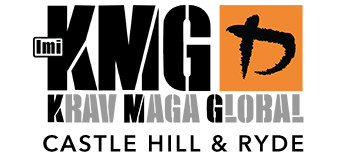Utilizing Common Objects in Self-Defense
Did you know common objects like keys, pens, and smartphones can be powerful tools for self-defence?
They’re quite often with you and can help you stay safe when traditional tools aren’t an option (or n0t necessarily legal). Learning to use these items effectively boosts your adaptability and confidence.
Consider some of these shield type examples that can be used:
– Chairs
– Backpacks
– Bins
– Umbrellas
– Large Metal Drink Bottles
Here’s how these items can be implemented:
Chairs
- Blocking/Shielding: Holding a chair between you and the attacker creates a barrier that can absorb or deflect strikes. The legs of the chair can intercept attacks directed at your body, protecting you from punches, kicks, or weapon strikes.
- Creating Distance: By thrusting the chair forward, you can create distance, forcing the attacker to adjust their position. This gives you a moment to escape or prepare a counter.
- Striking: The edges and legs of the chair can be used offensively. You can thrust the chair legs toward the attacker’s abdomen, groin, or face, disorienting them.
- Trapping/Pinning: If the attacker is against a wall or furniture, you can use the chair to trap or pin them, limiting their movement and neutralizing their ability to attack effectively.
Backpacks
- Shielding/Blocking: A backpack can be held up as a shield, especially against strikes or slashes from weapons. By positioning the backpack in front of your vital areas (e.g., chest or head), it can absorb much of the impact from blunt or edged weapons.
- Swinging: You can swing the backpack toward the attacker’s face or upper body to disorient them or create an opening for escape. The momentum of a heavy backpack can throw the attacker off balance.
- Entangling/Trapping: You can use the straps of the backpack to wrap around the attacker’s limbs or weapon, potentially disarming or trapping them for a moment to give you an advantage.
- Improvised Striking Tool: You can strike the attacker with the backpack, using its bulk to hit soft targets like the head or throat, momentarily disorienting them.
Trash Cans / Lids
- Shielding: A bin or trash can (especially one with a lid) can act as a large shield, protecting your body from strikes or weapon attacks. Holding the bin in front of you allows you to absorb the force of a strike.
- Pushing/Charging: You can use the bin to charge toward the attacker, pushing them backward or knocking them off balance. This can help create an opportunity for escape or a counterattack.
- Distraction: In some cases, you can throw the bin or lid at the attacker as a distraction, allowing you to escape or gain a better position.
- Trapping/Blocking Movement: Using the bin to block the attacker’s legs or body can trap them momentarily, preventing them from moving or attacking effectively.
Umbrellas
- Blocking/Deflecting: A closed umbrella can be used as a baton to block strikes or deflect a weapon attack. By angling the umbrella, you can guide a weapon (such as a knife or stick) away from your body.
- Thrusting/Striking: You can use the tip of the closed umbrella to thrust into soft targets such as the face, throat, or solar plexus. This can incapacitate the attacker momentarily.
- Hooking/Disarming: If the umbrella has a curved handle, you can use it to hook the attacker’s limb or weapon, potentially disarming or trapping them.
- Distance Management: By using the length of the umbrella, you can keep the attacker at bay, controlling the distance between you and them to prevent close-range attacks.
Large Metal Bottles
- Blocking/Parrying: If the bottle is large enough, it can be used to block or parry punches or weapon strikes. By angling the bottle, you can redirect the attacker’s force away from you.
- Improvised Throwing Object: In desperate situations, you can throw the bottle at the attacker to create a distraction or cause injury, giving you a moment to escape or gain control of the situation.
Tactical Implementation Across All Objects
- Be Aware of Distance: The key with these objects is controlling distance. Objects like chairs, umbrellas, and bins allow you to keep the attacker at bay, which can prevent them from delivering effective strikes or grappling.
- Use Natural Body Movements: Most of these objects can be swung or thrust using natural body mechanics (e.g., a baseball bat swing with a metal bottle or backpack).
- Quick Thinking: The success of using these objects relies on your ability to react quickly. Identify the object that can give you the best advantage based on your surroundings and the type of attack you’re facing.
As part of y/our training, try to incorporate practicing to scan and equip yourself with a common object as one of your finishing modes.
Each object requires practice to understand how best to wield it, but Krav Maga’s principle of using what’s at hand to defend yourself makes these tools practical in a self-defense scenario.


